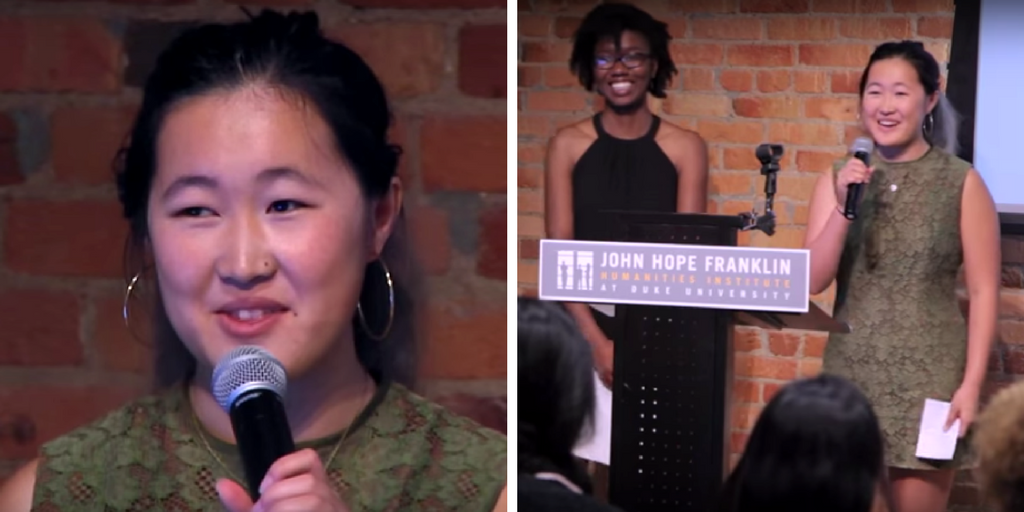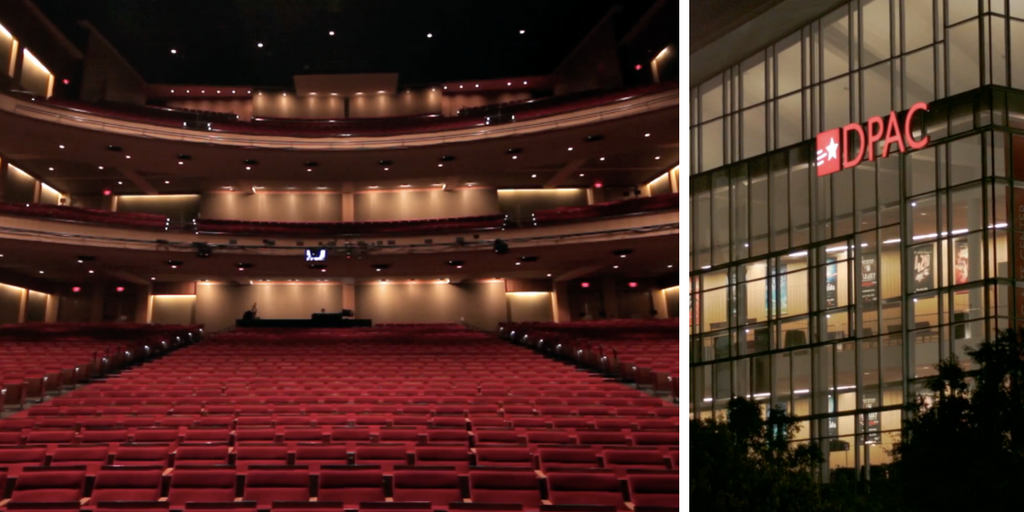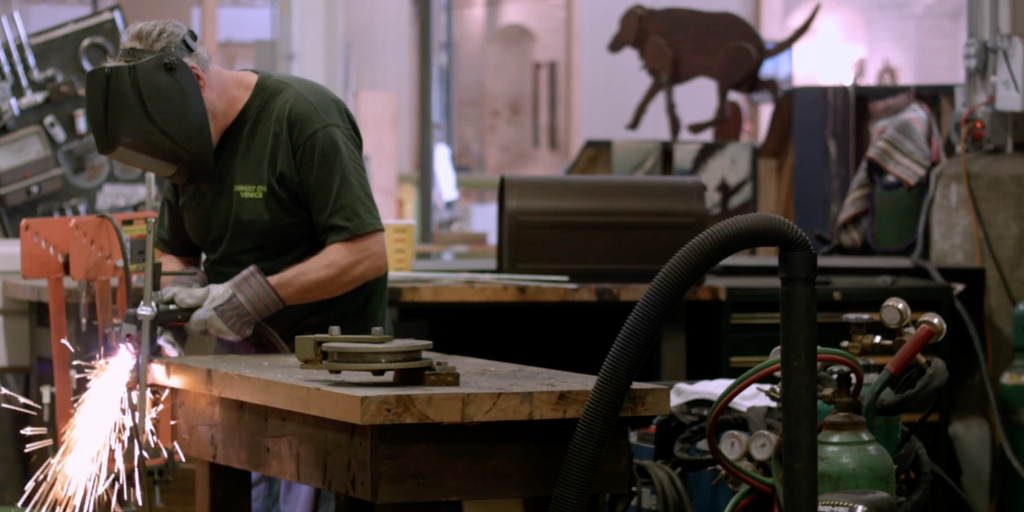Investigating the Economics of Durham’s Arts Scene
March 1, 2018

Over the past ten years, Durham has emerged as a hub for a broad range of cultural industries that have enriched the city’s image and attracted other creative ventures. How do we evaluate the impact of local creative industries on the city’s economy and measure the factors that drive creative production?
The Bass Connections project team Creative Industries and the Urban Environment has spent the last six months researching the relationship between urban development and cultural production by combining an economic analysis of arts industries and occupations in Durham with research into city policy and urban planning.
Using her growing expertise in the fields of visual culture and urban development, Duke sophomore Jess Chen joined the team to provide focus for her passions in art history, policy and advocacy. Here, Jess reflects on her team’s research into the Durham arts scene and how it has impacted her educational path and plans for the future.

Jess Chen ’20, Art History & Public Policy
During my freshman year, I took Hans Van Miegroet’s “History of Art Markets” class, where he mentioned that he was starting a new Bass Connections project about Durham’s economy and the arts.
I loved my final project in Professor Van Miegroet’s course, which examined the international market for Neo-Pop Art, and I was intrigued by the idea of researching Durham, an area quickly becoming known for its arts scene. Durham is such a fantastic resource and community that Duke students don’t always explore or seek to understand, so I thought it would be a great idea to research and contribute to the city and arts scene in which Duke is embedded.

I also knew that I wanted to conduct research that would help me hone skills in visual and data analysis. Last summer, I participated in Story+, where I worked on a collaborative research project in partnership with Rubenstein Library. Our team conducted extensive archival research to explore the history of race and ethnicity in American advertising and created a digital research resource and digital exhibits that illuminate this history for both academic and public audiences.
I found that I really enjoyed the process of going through the archives and formulating my own answers to research questions, and the experience solidified my interest in pursuing research opportunities at Duke that actively sought to explore visual culture.

I contribute to our Bass Connection team’s research by familiarizing myself with art and economics theory in order to see how we can apply these interdisciplinary concepts and ideas to help interpret our data.
Our team includes graduate students, undergraduates of all levels and our team leaders, all of whom have very different skill sets. For example, my team partner Jonathan Chapman (’18) is incredible at applying advanced statistics concepts to our data, while Fiene Leunissen is very talented at creating easy-to-read visualizations. Laura Ritchie, one of our graduate student team members, is the co-founder and director of The Carrack, an art gallery in downtown Durham, and has years of practical experience with the local art network.
Professor Van Miegroet also has contacts throughout the data science, economics and art sectors that we’ve consulted with for feedback on our research and ideas.
My own role as a literature specialist has required me to become comfortable with different data interpretation methods and adept at understanding and deploying art, economics and statistical theories to a range of data types.
The most surprising thing about this Bass Connections project is how quickly our team has been able to progress from art market and community research to presenting our work and seeing its tangible effects.

Research like ours can affect community engagement and construction in Durham, especially since Durham’s Cultural Master Plan, which outlines the city’s strategies to increase the arts and culture sector, will be revisited in just a couple of years. Furthermore, it has been really interesting to map the rise of arts networks in Durham and identify the rise of cultural hubs concurrently with the rise of gentrification and housing prices in Durham. This shows that there are inequality and social justice issues that also underlie this story.
Our project definitely hasn’t come without challenges, however, and I’ve been able to learn a lot about how to improve as a teammate and researcher. Our weekly meetings facilitate honest critiques of ideas and progress reports, and one of the things I’m still learning how to do is speak more freely in these discussions and deliver constructive criticism.
The rest of our semester will be focused on figuring out ways to visually present our work to communities both at Duke and in Durham. We want to create compelling posters, graphics and data art that tell the story of Durham’s arts scene in an accessible way.
I am really glad our research will actually be presented and exhibited to people in Durham instead of just staying inside Duke. This way, our research has the potential to positively affect the Durham arts community.
This project has helped me learn to think in a truly creative way by combining and synthesizing information from a variety of sources. Through extensive readings of economics papers and urban planning journals, I’ve gained experience learning how to quickly read and absorb theory-heavy information in a new field.
Also, because our project consists of several sub-projects, I’ve learned to detect where and how different research topics and disciplinary fields intersect and interact. For example, one of our sub-groups analyzes arts organizations in Durham by industry, while data collected by my group is organized by occupation. By delving into the nitty-gritty differences between industry and occupation, our team as a whole has been able to hypothesize that the Bureau of Labor Statistics is actually failing to capture the total number of artists in Durham.

Additionally, because all members of our team contribute to the discussion of goals and next steps, I’ve been challenged to bring in personal experiences and readings that can spur new ideas. Even my personal challenge of speaking out more has vastly improved my ability to be more vocal in class discussions and other meetings, a skill that can help in both the personal and professional world.
Because of the literature review I have done on this project, I am sure that I want to be engaged in the theory of art and arts-based research in the future. After Duke, I’d like to attend graduate school to study art history, but I’m also considering career pathways in museum curating or working in an art gallery or arts advocacy. This project is relevant for bridging multiple disciplines and understanding the interconnections between art history and other fields. I have researched topics as diverse as visual culture, urban planning and education policy in order to have a broad, interdisciplinary understanding of the arts economy in Durham.
Learn More
- Join us at the Bass Connections Showcase on April 18.
- Explore additional projects in the Information, Society & Culture theme.
- Learn how to communicate academic research in visually compelling ways at the Designing Effective Academic Posters session on March 6.
